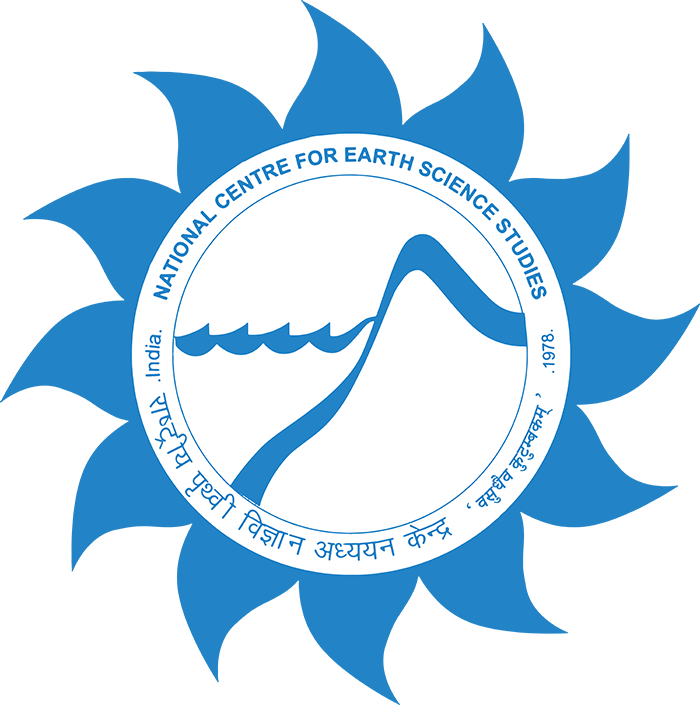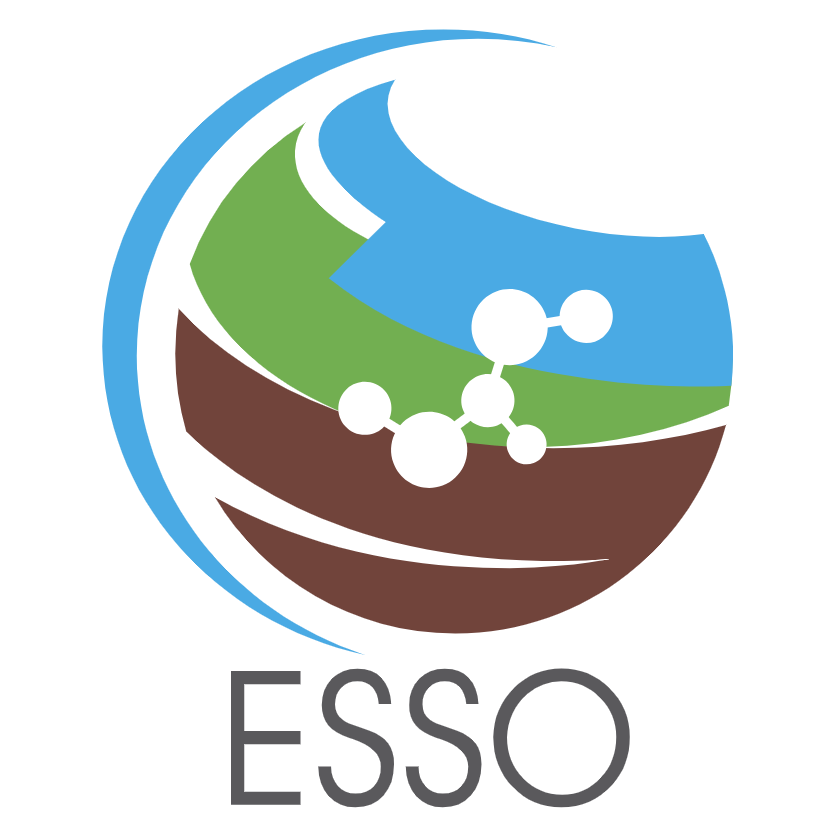Isotope Geochemistry and Geochronology Facility (IGGF)
The Isotope Geochemistry and Geochronology Facility at the National Centre for Earth Science Studies (NCESS), Thiruvananthapuram, India, is a state-of-the-art analytical laboratory dedicated to the study of the chemical and isotopic evolution of the Earth. The facility integrates in-situ and solution-based mass spectrometry techniques to address a wide range of geological questions, from crustal growth and metamorphism to sedimentary provenance, fluid-rock interaction, and planetary processes.
Our analytical platform combines Laser Ablation (LA) systems with Quadrupole and Multi-Collector Inductively Coupled Plasma Mass Spectrometers (Q-ICPMS and MC-ICPMS), enabling precise measurements of elemental concentrations, U-Pb ages, and radiogenic and non-traditional isotopic compositions in both mineral and whole-rock samples.
Our analytical platform combines Laser Ablation (LA) systems with Quadrupole and Multi-Collector Inductively Coupled Plasma Mass Spectrometers (Q-ICPMS and MC-ICPMS), enabling precise measurements of elemental concentrations, U-Pb ages, and radiogenic and non-traditional isotopic compositions in both mineral and whole-rock samples.
Analytical Capabilities
We aim to advance isotope geochemistry and geochronology through the development and application of cutting-edge analytical techniques. The facility supports researchers across India and abroad by providing high-quality data on:
- In-situ U-Pb dating of accessory minerals including zircon, monazite, rutile, apatite, titanite, garnet, calcite, allanite, and xenotime.
- In-situ Trace and rare earth element (REE) geochemistry of minerals.
- In-situ Hf, Sr, Nd, Pb, Li, and B isotope analyses of minerals.
- Whole-rock Sr-Nd-Hf-Pb isotope geochemistry.
Instrumentation
Teledyne LSX-213 G2+ laser ablation system
The Teledyne LSX-213 G2+ laser ablation system, offering a 5ns shot pulse, is capable of generating >3 mJ/pulse of laser energy with a spot size range between 4-200 μm. This allows improved absorption of energy and less transmission of the beam into the underlying epoxy. This aids in retarding the instability and U-Pb fractionation during spot analysis, which indeed reduces the stabilization period, allowing a short warm-up time. The laser is characterized by a flat-topped beam energy profile with pulse width < 5 nsec, enabling a repetition rate up to 20 Hz. The system is equipped with a HeLEx II sample ablation cell allowing automated stage translation with a precision of ±2-3 μm for pre-setting of analytical points. The HeLEx II with an internal volume cup enables effective sample transportation to the ICPMS through the articulated gas inlet/outlet arm. The ablated material from the sample is pushed out of the chamber by purging helium gas, which later mixes with the carrier argon gas and gets transported into the plasma. The fast washout of the laser ablation system allows rapid measurement of elements with a minimal fractionation effect.
Agilent 7800 Quadruple ICPMS
The Agilent 7800 Quadrupole Inductively Coupled Plasma Mass Spectrometer (ICP-MS) is a high-performance analytical system designed for ultra-trace elemental and isotopic determinations in complex geological matrices. It features a dual-mode discrete dynode electron multiplier (DDEM) detector with a dynamic range exceeding 10⁹, enabling seamless transition between pulse-counting and analog detection for accurate quantification of elements across several orders of magnitude. The 3 MHz hyperbolic quadrupole mass analyzer, operating over a mass range of 2–260 amu with a variable resolution of 0.3-1.0 u, provides excellent mass stability and high ion transmission efficiency. The system exhibits high sensitivity, typically achieving detection limits ≤5 × 10⁻⁷ counts for low-mass isotopes and ≤1 × 10⁻⁷ counts for high-mass isotopes. Sample introduction is achieved through a Peltier-cooled, Scott-type double-pass quartz spray chamber coupled with a concentric nebulizer and a High Matrix Introduction (HMI) system, ensuring efficient aerosol transport and plasma stability even for high-TDS samples. The robust 27 MHz RF plasma generator, with a power range of 500-1600 W, ensures complete ionization of analytes and stable operation under variable load conditions. Interferences from polyatomic ions are effectively mitigated by the Octopole Reaction System (ORS), which uses helium collision gas in kinetic energy discrimination (KED) mode to remove common spectral interference species.
Nu Plasma III Multi-Collector ICP-MS
The Nu Plasma III Multi-Collector Inductively Coupled Plasma Mass Spectrometer employs a double-focusing geometry consisting of a Nier-Johnson magnetic sector and an electrostatic analyzer, providing simultaneous mass focusing for a wide mass range with high transmission efficiency. A unique feature of the instrument is the patented variable-dispersion Zoom lens, which allows real-time adjustment of the ion beam dispersion at the collector plane. This design provides unmatched flexibility to measure isotopes of elements ranging from lithium (Li) to uranium (U) without changing the hardware configuration. The ion beam generated in the plasma passes through a high-transmission interface, optimized for stability and low backgrounds. The fast-sampling interface cones (nickel or platinum) are designed to minimize oxide and doubly charged ion formation. The beam is then guided through the Zoom optics system to the collector array, ensuring high stability and reproducibility of mass dispersion during both static and dynamic collector configurations. The collector block of the Nu Plasma III consists of 16 Faraday detectors for high-precision isotopic ratio measurements of major isotopes, 2 Daly detectors for medium-intensity ion beams, and 4 ion counters (compact discrete dynode multipliers) for low-abundance isotopes or small spot analyses. The system also supports on-peak zero (OPZ) correction, baseline subtraction, and real-time drift correction to minimize analytical bias during long analytical sessions. The instrument’s multi-collector stability and simultaneous detection capability enable high-precision isotopic ratios with internal reproducibility typically better than ±0.005% (2σ) for most radiogenic systems and better than ±0.02‰ for stable isotope systems. Mass-dependent fractionation during ion transmission, which is corrected using sample-standard bracketing, exponential law normalization, or internal normalization (depending on the isotopic system). The Aridus III desolvating nebulizer system is coupled with the system to enhance signal stability and sensitivity by efficiently removing solvent vapors from the aerosol stream, thereby reducing oxide and hydride interferences, and improving precision in trace and isotopic analyses.
Sample Preparation and Imaging
Sample preparation for in-situ studies is carried out in the dedicated Thin Section and Sample Preparation Laboratory at NCESS.
- Mineral separates are obtained through crushing, Wilfley table concentration, and Frantz magnetic separation. Handpicked grains are mounted in 2.5 cm epoxy discs, sectioned, and polished to 1 μm finish.
- Thin and thick sections (30–100 μm) are prepared for texturally constrained in-situ work.
- Whole-rock powders are digested in HF-HNO₃-HCl acid mixtures and purified through chromatographic separations in a class 10000 clean chemistry laboratory.
Collaborations and Access
The facility welcomes collaborative projects from universities, research institutes, and government organizations. Analytical services are provided under shared authorship or collaborative agreements. For access, proposals can be submitted to the In-Charge, Isotope Geochemistry and Geochronology Facility, NCESS.
Contact:
Dr. Amal Dev J.
Scientist-In-Charge
T: 0471-2511655/1635
E: isotope[dot]lab[at]ncess[dot]gov[dot]in

